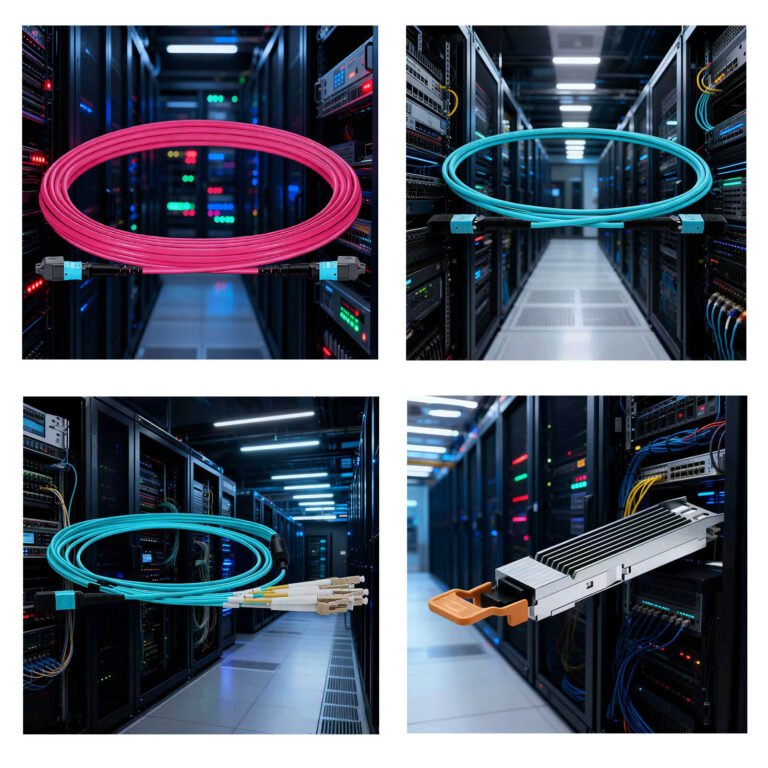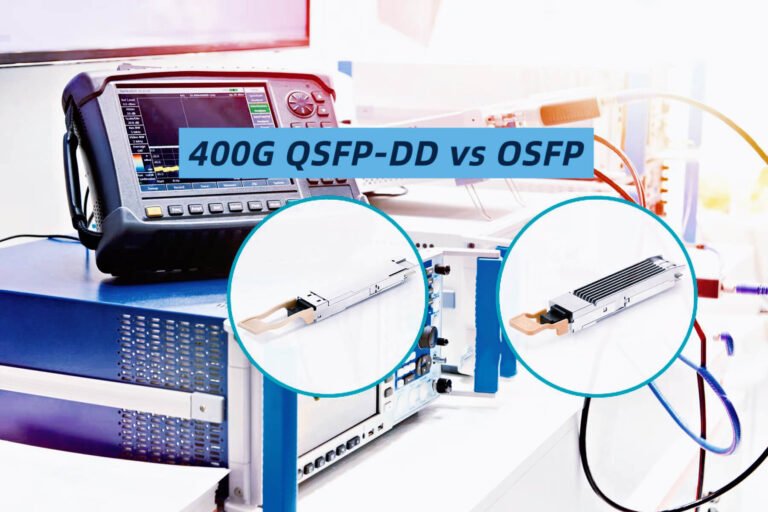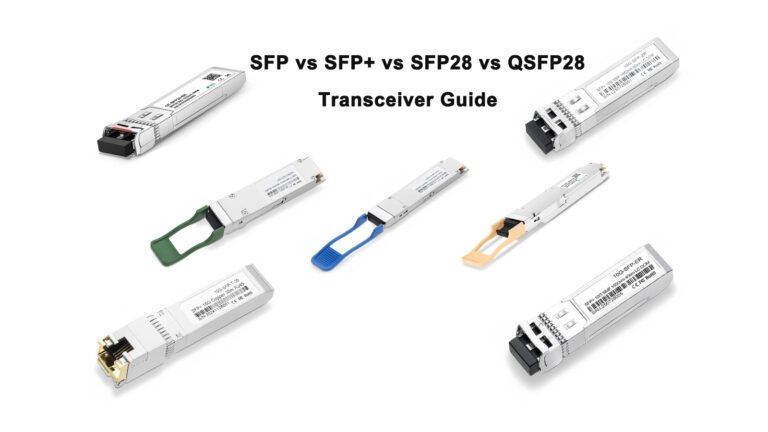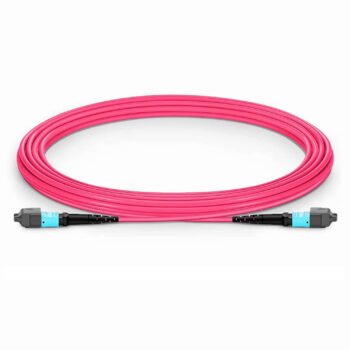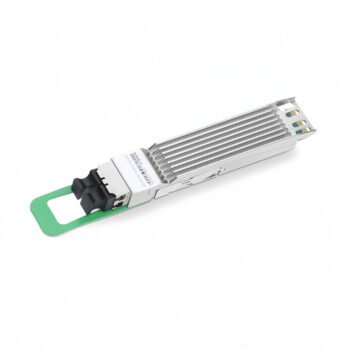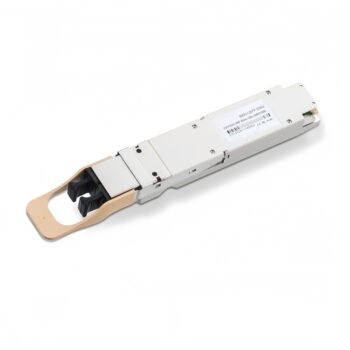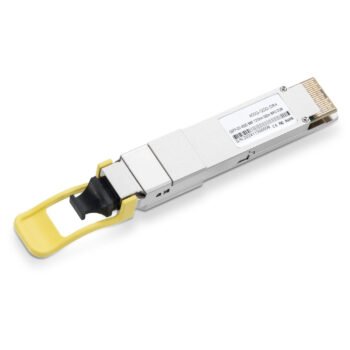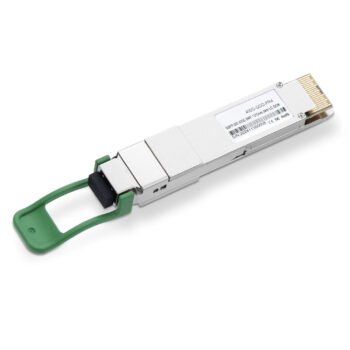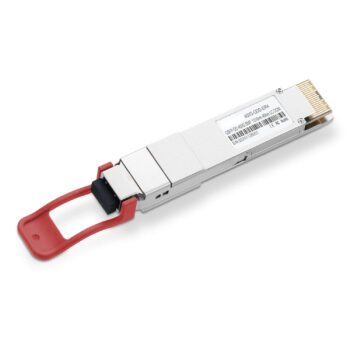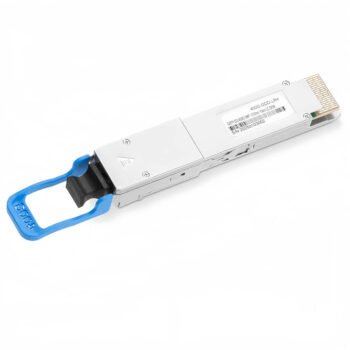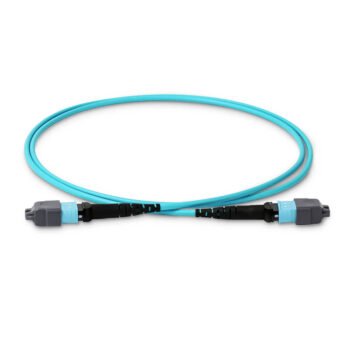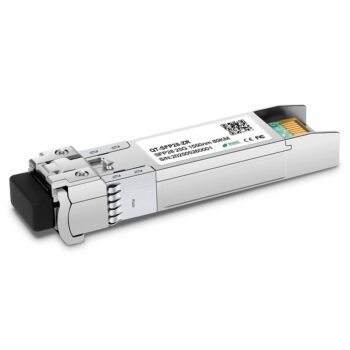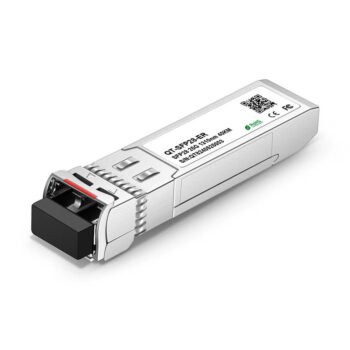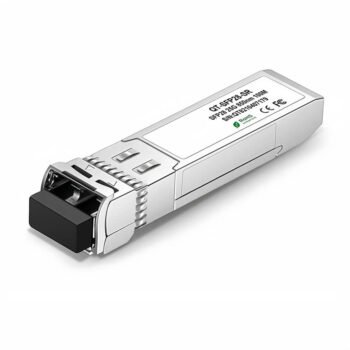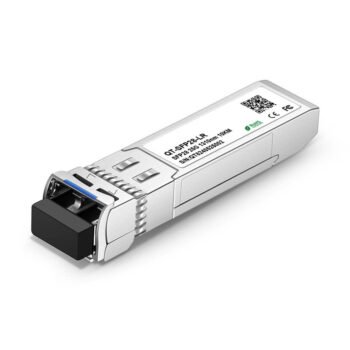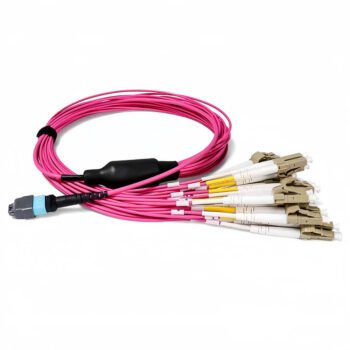What Is a PoE Switch and How Does It Work?

I see many companies struggle with messy cabling and power issues. They grow frustrated because their network devices often require separate AC adapters and complicated connections. I have been there before, and it was daunting. But I discovered a simple approach. A PoE Switch can provide data and power through one Ethernet cable. This can solve the clutter problem and remove a lot of headaches.
A PoE Switch is a type of network switch that sends both data and electricity through one cable. This helps power devices like IP cameras or wireless access points without needing extra power cords. It streamlines installation, enhances cable management, and lowers overall costs.
I remember my early days in network planning. I felt overwhelmed by the endless wires and bulky power adapters. Then I found out that PoE Switches could power cameras, phones, and access points all at once. It was a turning point. I want to share what I learned, so you can avoid that same frustration. Let’s dive into the essentials and see how PoE Switches can simplify your infrastructure.
What Is a PoE Switch?
A PoE Switch is a network device that combines data transfer with power supply over a single cable. This makes life easier for IT teams and engineers. I learned about it when I tried to set up a small surveillance system and saw how it eliminated separate power adapters. It is very straightforward.
A PoE Switch uses the Ethernet cable to deliver network data and electrical power to connected devices. This means cameras, phones, or Wi-Fi access points do not need individual AC outlets. It helps streamline the setup process and improve overall efficiency.
I like to break down the fundamentals. PoE means Power over Ethernet, and a PoE Switch is the hardware that implements this technology. Below is a simple table that shows what a PoE Switch provides:
| Feature | Description |
|---|---|
| Data + Power Over Cable | Transmits data packets while providing power |
| Cost-Efficiency | Reduces the need for dedicated electrical wiring |
| Easy Deployment | Simplifies installation and saves space |
| Scalable Design | Supports multiple powered devices at once |
My First Encounter with PoE
When I started working at ABPTEL, I faced a real challenge. We had to power IP cameras in a large hallway without many power outlets. Traditional switches needed separate power adapters. We wanted fewer wires and a cleaner look. That’s when I learned about PoE Switches. It felt amazing to see cameras come alive through one cable.
The Role of ABPTEL in PoE Solutions
At ABPTEL, we specialize in PoE Switch manufacturing and supplying. We aim to deliver products with stable quality and enough power budget to handle many PoE devices. Our team ensures every switch meets industry standards. We also support OEM/ODM PoE Switch solutions for clients who need custom features.
Why the Name “Power over Ethernet”?
It sounds technical. But it is simple: network cables (Ethernet) can carry more than data. They also transport electricity. So, “Power over Ethernet” captures the main idea. One cable for both tasks.
Table: Basic PoE Switch Classification
| Type | Key Characteristic | Example Use Case |
|---|---|---|
| Unmanaged PoE Switch | Plug-and-play setup | Small offices, simple networks |
| Managed PoE Switch | Offers configuration and monitoring features | Enterprise networks, advanced control |
| Industrial PoE Switch | Rugged design for harsh environments | Outdoor monitoring, factory floors |
| High-power PoE Switch (PoE++) | Extended power budget for high-demand devices | PTZ cameras, large IP speakers |
This table highlights different PoE Switch types. I found it crucial when I had to choose a switch that matched my project’s requirements.
PoE vs. Traditional Switches?
I recall how I questioned the difference between a PoE Switch and a normal switch. Both transfer data through Ethernet ports. But one also delivers power. This unique advantage made network management simpler for me. It saved me from buying a separate power infrastructure.
A PoE Switch delivers power and data through the same cable. A traditional switch only sends data. This difference seems minor, but it changes how you install and maintain network devices. It lowers cables, outlets, and overall complexity.
I want to make a deeper comparison. When I first asked about PoE vs. traditional switches, I learned that the difference lies in integrated power capabilities. Here is a detailed table:
| Aspect | PoE Switch | Traditional Switch |
|---|---|---|
| Power Delivery | Provides power over Ethernet cables | Requires separate power adapters for devices |
| Cable Management | Fewer cables and simpler layouts | Multiple cables for data and power |
| Installation Cost | Often lower because fewer electrical installations are needed | Higher if each device needs a dedicated AC outlet |
| Device Compatibility | Works with PoE-enabled devices like IP cameras, phones, WAPs | Limited to data-only functions |
| Network Flexibility | Easy to move or reposition devices without new power lines | Location restricted by power outlet availability |
Practical Impact for Network Architects
When I was helping a friend set up a small office, we compared both solutions. Traditional switches needed many AC outlets. PoE Switches did not. The single-cable approach gave us more flexibility in camera and access point placement. This saved time and money.
Why Some Still Prefer Traditional Switches
Some stick with traditional switches because their devices do not require external power or because they already have power infrastructure. They might be content with the older setup. But I see that more professionals lean toward PoE because it’s an investment in long-term flexibility.
My Journey with ABPTEL’s PoE Switch Solutions
At ABPTEL, we deliver PoE Switches that fulfill modern network needs. Our focus is stable performance, easy setup, and minimal downtime. We see clients who used older, non-PoE hardware. They eventually shift to PoE Switches once they realize the benefits for IP cameras, wireless access points, and other powered devices.
When I compare PoE with traditional switching, I realize PoE is more than a luxury. It is the next logical step for networks that need to run devices like IP cameras, VoIP phones, or WAPs.
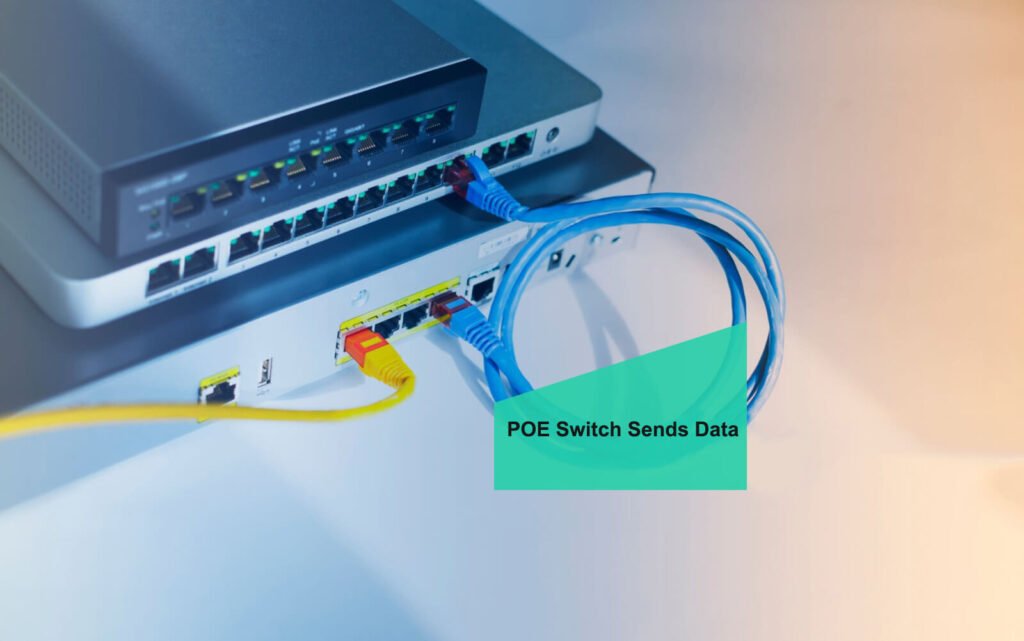
How Does PoE Power Delivery Work? (IEEE 802.3af/at/bt)?
I once wondered why there were letters like af, at, and bt next to PoE. These labels represent specific power standards set by the IEEE 802.3af/at/bt[^2] organization. The PoE Switch follows these rules to ensure consistent power output. It helped me pick the right switch for high-demand devices.
IEEE 802.3af/at/bt standards define how much power a PoE Switch can provide. They also ensure compatibility between devices. 802.3af supports up to 15.4W per port, 802.3at goes up to 30W, and 802.3bt can exceed 60W for bigger devices. The right standard depends on device requirements.
These standards matter because they align device power needs with switch capacity. You might see them labeled as PoE, PoE+, or PoE++.
IEEE 802.3af (PoE)
- Up to 15.4W of DC power per port
- Actual power delivered is around 12.95W because some power is lost in the cable
- Ideal for IP phones or basic IP cameras
IEEE 802.3at (PoE+)
- Up to 30W of DC power per port
- Delivers around 25.5W to devices after cable loss
- Suits high-resolution IP cameras or wireless access points
IEEE 802.3bt (PoE++)
- Often split into Type 3 (up to 60W) and Type 4 (up to 100W)
- Supports devices like PTZ cameras or LED lighting
- Very useful for advanced equipment that requires more power
Table: Summary of Power Standards
| Standard | Max Power at Port Output | Suitable Devices |
|---|---|---|
| IEEE 802.3af (PoE) | 15.4W | Basic IP cameras, VoIP phones, small WAPs |
| IEEE 802.3at (PoE+) | 30W | HD IP cameras, advanced WAPs |
| IEEE 802.3bt (PoE++) | 60W to 100W | PTZ cameras, large displays, LED lighting |
I got confused when I first saw all these abbreviations. But once I memorized these power levels, it became much easier to select the right PoE Switch for each application.
Voltage and Current Flow
A PoE Switch injects power onto certain Ethernet wire pairs. The switch and device negotiate the power handshake. This ensures the device only draws what it needs. The standard handles that process. It is why PoE devices do not burn out if the switch can deliver more power than required.
Key Role of ABPTEL in IEEE Standards
We, at ABPTEL, follow these guidelines. We also test each switch in our laboratory, using precise instruments and stress tests. This ensures compliance and reliability. Our OEM/ODM PoE Switch solutions give customers the right power capacity for their devices.
Real-World Example: PoE Switch for IP Cameras
If you have a set of IP cameras that each need 5W, a PoE switch with IEEE 802.3af is enough. But if you have PTZ cameras needing around 25W or more, you aim for 802.3at or higher. Always match the devices’ power draw with the PoE Switch’s supported standard.
What Are the Common Applications of PoE Switches?
PoE Switches appear in many fields. I first noticed them in surveillance systems. Later, I found them powering wireless access points and even digital signage. They can handle various tasks because they combine data and power delivery in one cable.
PoE Switches apply to IP cameras, wireless access points, VoIP phones, and more. They cut wiring complexity and allow flexible device placement. This makes them popular in offices, retail stores, manufacturing plants, and even outdoor settings when industrial PoE Switches are used.
I have worked on multiple PoE-related projects at ABPTEL. Each one taught me a different angle on how PoE Switches can help.
IP Surveillance Systems
“poe switch for ip cameras[^1]” is a key phrase I see often. That is because IP cameras benefit greatly from PoE. Each camera can be placed where it is needed, instead of sticking to spots near power outlets. PoE Switches also allow quick deployment of many cameras without extra wiring.
Table: Typical IP Camera PoE Needs
| Camera Type | Power Consumption | PoE Standard Needed |
|---|---|---|
| Standard Dome | ~5W | 802.3af |
| Bullet Camera | ~7W-10W | 802.3af or 802.3at |
| PTZ Camera | 20W-30W+ | 802.3at or 802.3bt |
Some PTZ cameras can tilt, pan, and zoom, which requires more power. I learned this while managing a large security project in a downtown area. We needed 802.3at or higher to support multiple advanced cameras.
Wireless Access Points (WAPs)
Offices and malls rely on stable Wi-Fi coverage. PoE Switches help mount WAPs on ceilings without local power. I once had to mount a WAP in a shopping mall corridor. Running a power line was expensive. PoE saved time.
VoIP Phones and Smart Office Devices
VoIP phones need consistent power to handle calls. With PoE, each phone can be placed at any desk. This gave me the freedom to rearrange office layouts. Another advantage is easy remote reset. If a phone malfunctions, I can remotely power-cycle it via the PoE Switch interface.
Digital Signage and Kiosks
I saw a retail client use PoE for interactive kiosks that displayed store information. This streamlined the look. They needed fewer power sockets, so the store layout stayed clean. Some signage required higher power, so we recommended a PoE++ switch.
Industrial Environments
Factories and outdoor areas sometimes demand rugged PoE Switches. I have visited sites where temperatures vary widely and dust is common. Industrial PoE Switches have a sturdy metal casing, extended temperature ranges, and reliable surge protection. They are perfect for security cameras in factories or remote gates.
ABPTEL’s Approach to Common Applications
We do not just make generic PoE products. We tailor them to real-world needs. For instance, if you run a security system or manage data for a busy office, we can recommend a PoE Switch with the correct PoE power budget, port count, and port speed. We even offer solutions with fiber optic uplinks for bigger networks.
Conclusion: Why Choose PoE Switches?
I have seen many approaches to network deployment. PoE Switches stand out for convenience and adaptability. They eliminate separate power lines for devices like cameras, phones, and access points. This is a major advantage in any setting that wants flexibility and efficiency. I trust PoE solutions because I have used them in real projects, from small offices to large surveillance installations. The combined data and power capability is a significant step forward in modern networking.
PoE Switches answer a common challenge: how to power multiple network devices without messy cables or dedicated outlets. They provide data and power in one line, reducing cost and complexity. PoE vs. traditional switches might seem like a simple difference, but the benefits are big. Understanding IEEE 802.3af/at/bt helps pick the right switch for each device’s power needs. Common applications include IP cameras, WAPs, VoIP phones, and more. PoE Switches also make sense for digital signage and industrial deployments. At ABPTEL, we focus on delivering reliable PoE Switches with global coverage. Our products fit many use cases, from basic IP camera setups to large enterprise networks. I believe PoE Switches are the future of network infrastructure. That is why I recommend them to friends, colleagues, and clients. If you want to streamline your next network project, PoE Switches are the way to go.
[1]:This link offers a detailed guide on how to pick the right switch for IP cameras, based on budget, port count, and power demands.
[2]:This resource helps readers understand the official power classifications, ensuring device compatibility and efficient deployment.

